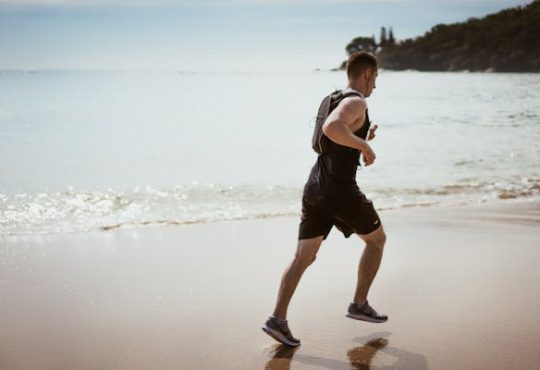Are you ready to hit the pavement and become a better version of yourself? Running is not just about putting one foot in front of the other; it’s about unlocking your full potential, both physically and mentally. Whether you’re a seasoned athlete or just starting out on your running journey, this guide will provide you with essential tips and techniques to elevate your running game. From what you need before you lace up your shoes to staying safe while pounding the pavement, we’ve got you covered. So, let’s lace up and dive into the world of running better!
How to Prepare for the Run
Before you embark on your running adventure, it’s crucial to prepare both mentally and physically. Here’s what you need to do:
Set realistic goals: Setting realistic goals is the cornerstone of a successful running journey. Whether you’re aiming to run a certain distance, improve your pace, or simply enjoy the process, setting achievable goals will keep you motivated and focused. Start by assessing your current fitness level, and then gradually increase the intensity and duration of your runs. Remember, progress takes time, so be patient with yourself and celebrate small victories along the way.
Invest in Proper Gear: One of the most important investments you can make as a runner is in proper gear, starting with a good pair of running shoes. Your shoes should provide ample support and cushioning to protect your feet from impact and prevent injuries. Visit a specialty running store to get fitted for the right pair of shoes based on your foot type and running gait. Additionally, wearing moisture-wicking clothing will help keep you cool and comfortable during your run by drawing sweat away from your skin.
Warm-Up Routine: Before you hit the pavement, spend a few minutes warming up your body to prepare it for the activity ahead. Dynamic stretches, such as leg swings, arm circles, and hip rotations, are ideal for loosening up your muscles and increasing blood flow. Incorporate movements that mimic the motions of running to target key muscle groups and improve flexibility. A proper warm-up not only reduces the risk of injury but also enhances your overall performance by priming your body for exercise.
Stay Hydrated: Proper hydration is essential for optimal performance and recovery, so make sure you’re drinking enough water throughout the day, especially before your run. Aim to consume at least 8–16 ounces of water a few hours before you lace up your shoes, and then continue to hydrate with small sips leading up to your run. During longer runs, consider carrying a water bottle or hydration pack to replenish fluids as needed. Signs of dehydration include thirst, dry mouth, fatigue, and dark-colored urine, so listen to your body and drink water accordingly.
By prioritizing these essential steps in your pre-run routine, you’ll set yourself up for success and maximize your enjoyment of running. Remember, consistency is key, so make these habits a regular part of your running regimen to see long-term progress and improvements in your performance.
2. Essential gear for running:
Having the right gear can make all the difference in your running experience. Here are some essential items you’ll need:
Running Shoes: Investing in a quality pair of running shoes is perhaps the most important decision you’ll make as a runner. Your shoes serve as the foundation of your entire running experience, providing support, cushioning, and stability to protect your feet from the impact of each stride. When choosing running shoes, consider factors such as your foot type, running gait, and the type of terrain you’ll be running on. Visit a specialty running store where knowledgeable staff can analyze your gait and recommend the perfect pair of shoes for your needs. Remember, the right shoes can prevent injuries and enhance your performance, so it’s worth investing in a high-quality pair that fits you well.
Moisture-Wicking Clothing: When it comes to running, comfort is key, and wearing the right clothing can make a world of difference. Opt for lightweight, breathable fabrics that wick away sweat and moisture from your skin, keeping you cool and dry throughout your run. Look for moisture-wicking shirts, shorts, and socks that offer ventilation and allow for freedom of movement. Avoid cotton clothing, as it tends to trap sweat and can lead to chafing and discomfort. Instead, choose technical fabrics designed specifically for athletic performance, such as polyester or nylon blends.
Fitness Tracker: In today’s digital age, a fitness tracker or running watch is a valuable tool for monitoring your progress and staying motivated. These devices allow you to track important metrics such as distance, pace, heart rate, and calories burned, giving you valuable insights into your performance and helping you set and achieve your running goals more effectively. With features like GPS tracking and personalized training plans, a fitness tracker can take your running to the next level by providing real-time feedback and actionable data to help you improve your performance over time.
Reflective Gear: If you plan on running outdoors, especially in low-light conditions or during early morning or evening hours, it’s essential to make yourself visible to drivers, cyclists, and other pedestrians. Wear reflective gear such as vests, armbands, or ankle straps to increase your visibility and reduce the risk of accidents. Additionally, consider adding reflective elements to your clothing and accessories, such as reflective piping or logos, to further enhance your visibility in low-light environments. Safety should always be a top priority when running outdoors, so don’t overlook the importance of reflective gear, especially during the darker months of the year.
Hydration Pack or Water Bottle: Staying hydrated is crucial for maintaining peak performance and preventing dehydration during your run. Whether you’re hitting the trails or pounding the pavement, it’s essential to carry water with you to replenish fluids lost through sweat and keep your body functioning optimally. Consider investing in a hydration pack or handheld water bottle that allows you to conveniently carry water with you on the go. Hydration packs are especially useful for longer runs or trail running adventures, as they provide hands-free access to water and often include storage compartments for other essentials such as keys, snacks, and your phone.
By investing in the right gear and accessories, you’ll not only enhance your running experience but also set yourself up for success on every run. Remember to prioritize comfort, safety, and performance when selecting gear, and don’t hesitate to seek advice from experienced runners or knowledgeable professionals to ensure you’re making the best choices for your individual needs.
3. Safety Tips for Running Outdoors:
Safety should always be a top priority when running outdoors. Here are some tips to keep you safe on the roads and trails:
Plan Your Route: Before lacing up your shoes, take a few moments to plan your route carefully. Familiarize yourself with the area and choose well-lit, populated routes whenever possible. Opt for paths with designated running lanes or pedestrian walkways to minimize the risk of accidents with vehicles. Consider the terrain and elevation of your route, especially if you’re running on trails or unfamiliar terrain. Planning your route in advance not only ensures a smoother and more enjoyable run but also reduces the likelihood of getting lost or encountering unexpected obstacles along the way.
Be Aware of Your Surroundings: Stay vigilant and alert to potential hazards while running outdoors. Keep your eyes and ears open for obstacles such as uneven terrain, potholes, tree roots, or debris on the path. Watch out for oncoming traffic, cyclists, and other pedestrians, especially at intersections and crosswalks. If running with headphones, keep the volume at a low level or use only one earbud to remain aware of your surroundings. Trust your instincts, and be prepared to adjust your route or pace if you encounter any potential dangers during your run.
Follow Traffic Rules: When running near roads or in areas with vehicle traffic, it’s essential to obey traffic rules and prioritize your safety. Always run against the flow of traffic to see oncoming vehicles and make yourself more visible to drivers. Use sidewalks or designated running lanes whenever available, and cross streets at marked crosswalks or intersections. Be cautious at intersections, and always look both ways before crossing the street, even if you have the right of way. Make eye contact with drivers to ensure they see you before crossing in front of them, and never assume that they will yield to you.
Carry Identification: In case of an emergency, it’s important to carry some form of identification with you while running outdoors. This could be a driver’s license, ID card, or even an ID bracelet with your name, emergency contact information, and any relevant medical details. In the event of an accident or medical emergency, having identification on your person will help first responders provide you with the appropriate care and notify your loved ones if necessary. Consider investing in a wearable ID device or carrying a small ID card in your pocket or running belt for added peace of mind.
Tell Someone Your Plans: Before heading out for a run, always let a friend or family member know your planned route and estimated return time, especially if you’ll be running alone. Share your route details, including specific landmarks or checkpoints along the way, and provide an approximate timeframe for your run. This way, someone will be aware of your whereabouts and can raise the alarm if you fail to return within a reasonable time frame. Consider using a running app or GPS tracker to share your location in real-time with a trusted contact for added safety and accountability.
How to Run Better and Unleash Your Full Potential
By following these safety tips and remaining vigilant while running outdoors, you can minimize the risk of accidents and enjoy a safer and more enjoyable running experience. Remember, safety always comes first, so prioritize your well-being every time you hit the pavement or trails.
Learning how to run better isn’t just about improving your speed or endurance; it’s about embracing the journey and becoming the best version of yourself. By following the tips outlined in this guide, you’ll be well-equipped to tackle any running challenge that comes your way. So, lace up those shoes, hit the pavement, and unleash your full potential as a runner!





